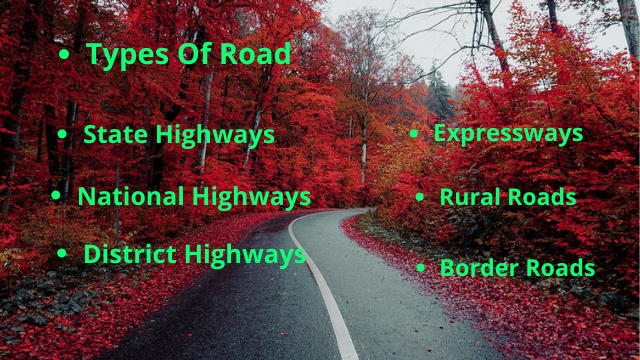What Are Golden Quadrilateral Highways Class 10

Types of Roads
In India, roads are classified in the following six classes according to their capacity
Golden Quadrilateral: This project is aimed at linking the four metro cities by six-lane Super Highways or Expressways. The North-South corridors linking Srinagar (Jammu & Kashmir) and Kanyakumari (Tamil Nadu), and East-West Corridor connecting Silcher (Assam) and Porbander (Gujarat) are part of this project.
Now, expressways are being built in other corridors as well. Construction and maintenance of expressways is the responsibility of NHAI (National Highway Authority of India). Expressways are access controlled and one needs to pay toll to drive through these roads. Expressways have indeed helped in reducing the travel time in the country.
State Highways: Roads linking a state capital with different district headquarters are known as State Highways. These roads are constructed and maintained by the State Public Works Department (PWD) in State and Union Territories.
Border Roads: The roads in border areas come under this category. Border Road Organisation was established in 1960 to ensure development of roads in strategic areas, especially on the northern and northeastern borders.
District Roads: These roads connect the district headquarters with other places of the district. These roads are maintained by the Zila Parishad.
National Highways: National Highways link extreme parts of the country. Construction and maintenance of national highways is the responsibility of CPWD (Central Public Works Department).
Other Roads: Rural roads come under this category. Pradhan Mantri Grameen Sadak Yojana gave a new life to rural roads. This scheme is aiming at connecting every village with all weather motorable road.
India has 2nd largest road network in the world (after the USA). The importance of roadways can be gauged from the fact that 65% of freight traffic and 85% of passenger traffic is carried through roads. We can claim that the road network in India is a developed one if we look at the road density which is 142.68 km per 100 square km in the country, and this figure makes India the number one country in the world. But India lags behind many leading nations in terms of length of road per 1000 population. This figure is 4.8 km per 1000 population.
Road Density
The length of road per 100 sq. km of area is known as density of roads. Distribution of road is not uniform in the country. Density of all roads varies from only 12 km in Jammu & Kashmir to 518 km in Kerala with the national average of 142 km (2016-17).
What Are Golden Quadrilateral Highways Class 10







